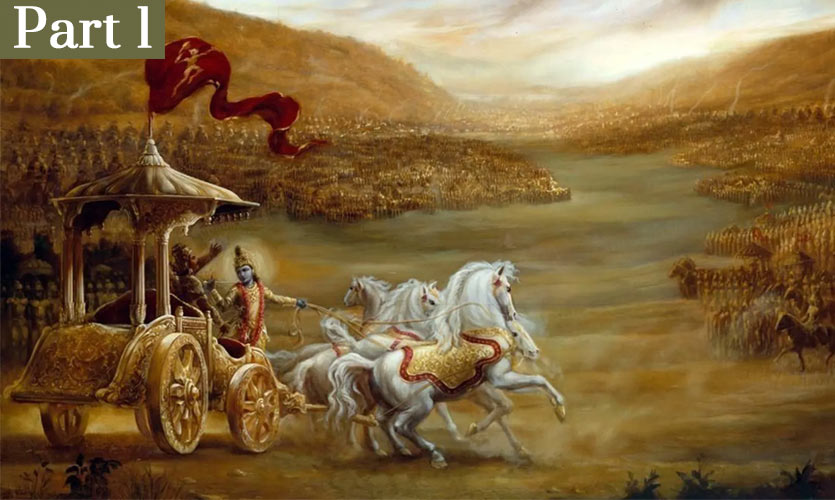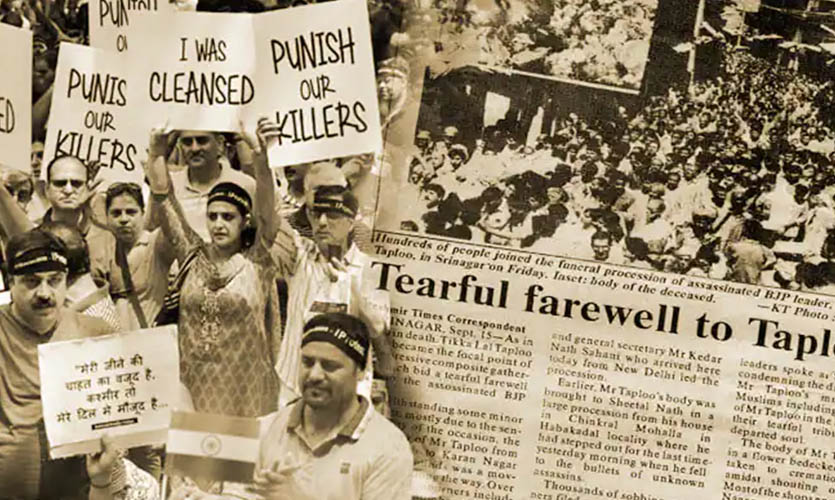In the Indian epic Mahabharat, Krishna- often known as the trickster- used deception tactics on the battlefield in Kurukshetra. He employed the strategy of Kutayuddha, the indirect approach. On the opposition side, Bhishma advocated for high intensity attrition fought within a short frame of time – Dharmayuddha, the direct approach. Against the might of the Kauravas who were militarily superior and had a larger army. It is argued that had it not been for Krishna’s trickery and deception, the Pandava’s stood no chance of winning the battle. Instead of Dharmayuddha, what if the Kaurava’s took down Lord Krishna? He was not the leader of the army, however he could be identified as a centre of gravity for the Pandava army. Not only did he use deception but he also convinced Arjuna-a member of the Pandava clan- to fight; war was inevitable. Arjuna’s famous moral dilemma on the battlefield could have been successful in preventing war itself had it not been for Krishna. The Kauravas would have saved many family members and been victorious if they targeted Krishna.
Unlike our story of the Mahabharat the dimensions of war have shifted, terms such as war of attrition and leadership have become increasingly dynamic. However, some questions about war remain constant. In our story the Pandavas fought for their rightful claim for the governance of Hastinapur, whereas the Kauravas aim was the annihilation of the enemy. For the latter, there seemed to be no emphasis on the least costly approach to victory. The Mahabharat also highlights the importance of an indirect approach for a military weaker state against a stronger enemy.
Adding to this, the evolution of technology has changed the style of battle and even the nature of war. Asymmetric warfare between state and non-state actors has re-calibrated the purpose of war and definitions of victory. War is not confined to the battlefield, this in turn has also made it more complicated to evaluate the success of war. There are three aspects to evaluate the success of war. Firstly, a less costly approach to war is a critical factor in defining victory. Secondly, long term costs, in the form of unintended consequences is a major problem in targeting the opponent’s leadership. Lastly, using a strategy of dislocating the leadership as a means to an end, rather than an end in itself, is less costlier. In other words, attrition warfare is unavoidable, however, in minimising cost, a strategy of dislocation can be effective.
***
The aim of war is victory over the enemy. Victory can be defined as defeating the enemy. Since the political objective is closely tied to defeating the enemy, the aim of war may not necessarily be to capture territory. Rather, the aim is to persuade the enemy to act in accordance to your objectives. Therefore, victory can be examined within the context of defeating the enemy. Obtaining the political goal with the least cost can also be considered victory, because expenditures and societal costs have been minimised in the process of war. Sun Tzu argues that war should only be fought when all other strategies fail. He emphasises on the relationship between less cost and victory. In particular. cost in lives and effort, shortest time possible and fewest casualties possible.
Economy of force, a Clausewitzian principle of war, emphasises the effective and appropriate use of armed forces. This principle can be extended to analysing other potential costs of a war. Casualties amassed, time spent on waging war, the opportunity cost of military expenditure are also costs – both socially and economically.
During World War I, Attrition was the most common style of battle. Germans possessed the world’s best technology. Their command systems and rail network were top notch. However, this did not equate to a decisive victory for them because their offensives lacked mobility. Its large army had very little manoeuvre and reconnaissance capabilities. Similarly, despite the Allied Powers’ grand strategies, most offensive campaigns- Somme and Gallipoli- played out as operational failures. Finally, constant artillery fire and shelling caused high casualties on both sides. Therefore, WWI defined the association between attrition and high costs.
Having witnessed the horrors of WWI and the consequences of trench warfare, Basil Liddell Hart argues for strategy that minimises engagement and casualties. He assesses a sound grand strategy as one which considers economic resources such as man power and moral resources such as people’s will. In addition, grand strategy should also evaluate the peace that follows war
Liddell Hart argues,
“A true adjustment would establish a perfect economy of force, in the deeper sense of that oft-distorted military term. But, because of the nature and uncertainty of war, an uncertainty increased by lack of scientific study, even the greatest military ability could not achieve a true adjustment, and success lies in the closest approximation to truth.”
Hart disputes Clausewitz’s “Blood is the price of victory”. The less costly approach is a battle which is fought under the most advantageous circumstances. In order to achieve these circumstances, a decision is taken without any serious fighting. In addition, this should lead to produce a profitable result.
Similar to Hart’s assertion of a bloodless victory, Robert Leonhard offers another perspective. He proposes the economy of force which is relevant to modern warfare. As mass warfare takes a backseat, he argues that dislocation is an economic way of dealing with the enemy. He applies the central economic principle of scarcity to war resources, arguing that resources should be used to sufficiently achieve the mission instead of aiming for total security.
A critical assessment of Leonhard’s theory sheds light on some unintended costs and consequences of such a strategy. Modern insurgencies provide plenty of examples for the consequences of dislocation that is specifically targeted towards the opponent’s leadership. When the United States ousted Iraq’s leader Saddam Hussein, it created a power vacuum due to lack of opposition to the Ba’ath Party, leaving many administered positions within the cabinet empty. In retrospect, it also created a breeding ground for terror networks such as Al qaeda, IS and other insurgent groups. Similarly, the United States is struggled to fully retreat from Afghanistan due to fears of a power vacuum. In aiming for economy of forces that assesses short term costs, a strategy that aims for total security can help curtail long term costs of victory.
It is safe to say that both attrition warfare and targeting leadership can have high costs. The aim is to compare short term as well as long term costs of a victory which enables grand strategic thinking instead of confining assessment to operational strategies. Attrition warfare can have high costs, but it is more likely to fulfil conditions of victory. On the other hand, targeting leadership can save costs, it is not necessarily be the best option on the grand strategic level.
Read more: Blurred Lines: The Conflict Between Free Speech And Hate Speech
Deep Dive is a weekly column written by Ashini Jagtiani exploring subjects that have revolutionised the socio-cultural fabric of society.










